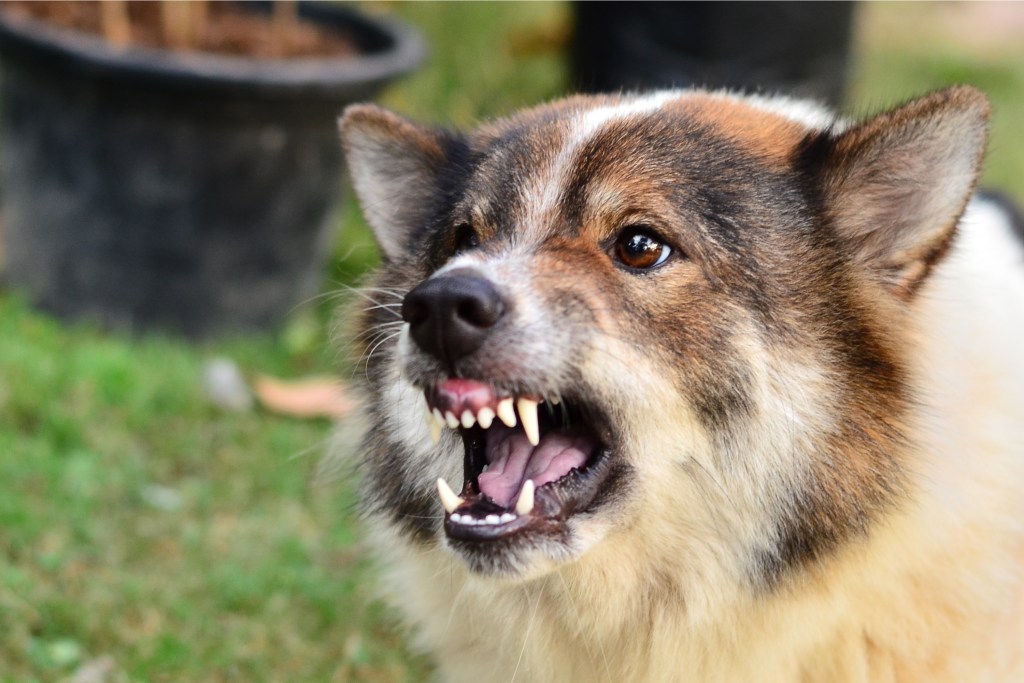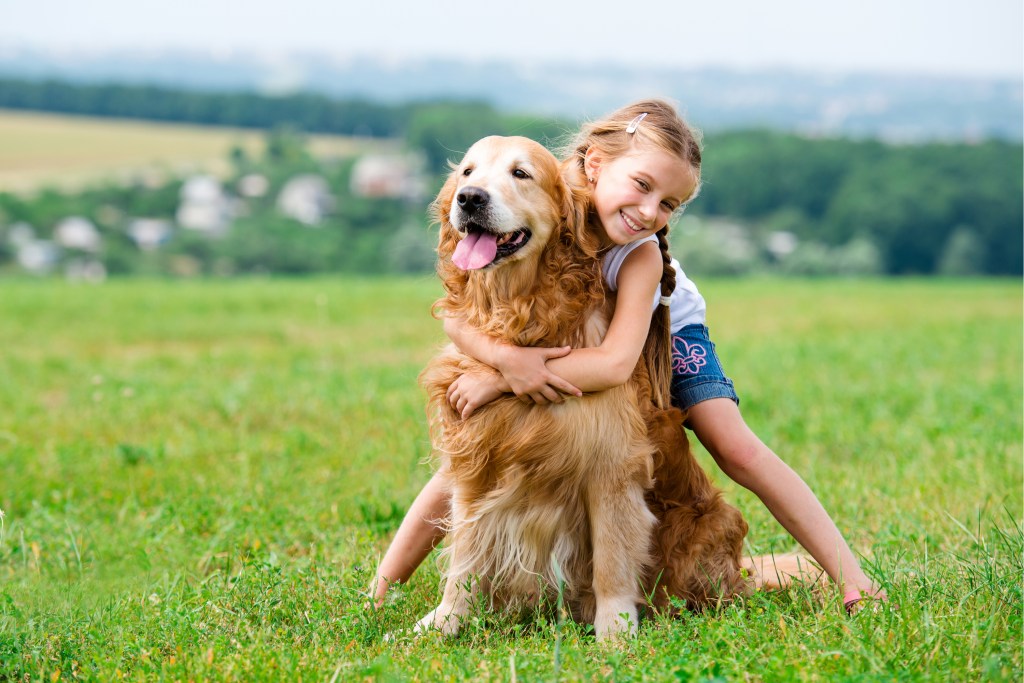Many pet parents are pleased when their dog gets to know their voice and begins to respond to common commands. But, while your dog knowing you and your voice is important, it’s equally essential to flip the script and ask yourself, “How well do you know your own dog and dogs in general?” Do you know that all dogs (regardless of breed, gender, or age) communicate using body language?
To avoid miscommunications that can easily lead to bites, attacks, and injuries, all humans (not just pet parents) need to develop a keen understanding of how dogs communicate and what their actions actually mean.

Everyone needs to learn more about dog body language
Even if you’re not a pet parent, most people encounter dogs as part of their daily life and job. Whether they’re visiting friends, delivering packages (or food) to someone else’s home, performing a service in a stranger’s home, walking through their own neighborhood, visiting a park, working as a server at a dog-friendly restaurant, working as a first responder, or hold a job at an airport or hotel, for example, most people interact with dogs on a routine basis. And whether you’re the type of person to go right up to an unfamiliar dog to pet them or the type of person who’d prefer to keep your distance, understanding and identifying a dog’s body language can help you avoid a potentially dangerous confrontation. This is doubly true for pet parents, who should always make sure they maintain control of the situation when their dogs encounter strangers.
So how can you tell what a dog is thinking? In addition to the usual suspects — barking, growling, and whimpering — dogs use their posture, facial expressions, and tail to showcase how they’re feeling and their intentions. When a dog is growling and showing its teeth, it’s clearly angry, frightened, stressed, or being defensive. They’re demonstrating to those around them that they’re ready to attack if the perceived danger continues. Most people are able to pick up on this communication, but sometimes it’s too late to deescalate the situation.
Always pay attention to a dog’s eyes, mouth, ears, tail, and overall posture.
- Eyes: A fixed stare, the dilation of a dog’s pupils, and whether or not a dog’s eyes appear glassy are all indications of anger, stress, or fear – emotions that could be a prelude to an attack.
- Mouth: When a dog pulls its lips back and shows its front teeth, this too is a sign of aggression.
- Ears: The position of a dog’s ears will depend greatly on the breed and type of ears they have, but flattened ears are an indicator that the dog is afraid and could be a precursor to an attack.
- Tail: While a wagging tail usually indicates happiness, if the tail wagging seems stiff, this could be a sign of anxiety. Similarly, a tail between the hind legs usually indicates that the dog is feeling fearful.
All of this adds up to a complete picture of a dog’s body language. These are signals humans need to identify and understand.

Don’t allow yourself or your kids to become a dog bite statistic
According to HG.org Legal Resources, more than 4.5 million people get bit by a dog every year, and 850,000 people (including 400,000 children) require medical attention resulting from a dog bite or attack. It’s important to understand that with the proper instruction, many dog bite incidents can be prevented.
For example, staying away from strange and potentially dangerous dogs is a good first step. Kids, in particular, should also be taught not to disturb a dog that’s eating, run up and surprise a dog, or pull on its tail. They should also always ask a dog’s owner if they can pet an unknown dog before approaching it, even if it appears friendly.
Meanwhile, pet parents need to get acquainted with their own dogs and learn to understand them. The easiest way to achieve this is to work with a certified trainer or animal behavior specialist. There are, however, books, videos, and plenty of resources online. For people forced to encounter dogs as part of their job, there are also precautions that can be taken and simple lessons that should be learned that will help you stay safe.
According to Kim Merritt, co-founder of Good Dog in a Box, “Dog bites are an $800 million per year problem for the insurance industry. If your dog bites someone, that falls back onto your homeowner’s insurance. The average dog bite insurance claim in 2020 was in the neighborhood of $42,000.”
Merritt was quick to point out that while some dog breeds have a bad reputation, no one breed is responsible for the issue.
“This is not a problem related to specific dog breeds. It’s a problem with people not understanding dog body language and what a dog is trying to tell them. Most people also don’t know how to properly respond to a dog that is angry, scared, or stressed,” explains Merritt.

How to interpret a dog’s body language
Humans often misinterpret a dog’s body language. According to Merritt, “When a dog licks its lips or shakes its body like it’s wet when it’s totally dry, for example, these are typically signs that dog is uncomfortable and stressed. Thus, when you see a dog exhibiting this behavior, you want to use caution and not try to approach or pet it. If an unfamiliar dog does not come up to you on its own, that’s a good indication it does not want to meet you and that it’s not comfortable with the situation. Don’t take this personally. Respect the dog’s space and move on.”
Another common misconception is that all dogs like to be hugged and kissed, which is not the case. “Dogs don’t appreciate a hug like humans do, and it’s an action that can easily be perceived as violent or aggressive by the dog. People should always keep their own face away from the face of a dog, regardless of how well you know the dog,” Merritt says.
So what should you do if you encounter an aggressive dog? There are four key steps every human should follow when they encounter a dog that is angry, frightened, or stressed.
- Stand still.
- Cross your arms.
- Avoid direct eye contact.
- Turn your head downward and look at the ground.
“Do not yell at the dog, wave your arms, or try to run away from the dog. The dog will likely approach you, sniff around, and will then typically walk away if you follow these steps. The goal is to calm the dog down, not elevate their feelings by making excessive noise or taking actions that will further frighten or stress out the dog,” Merritt says.
There are resources available
Many pet parents should consider investing in dog training, where animal behavioral experts can both teach their dog how to behave and guide the parent on what they should be doing as well. But what if you’re worried about how your kids —who can be unpredictable themselves — will interact with dogs? There are resources out there for you, too.
“When we first started Good Dog in a Box, which is a dog training program designed for families with children, we wanted to address the fact that too many children get bitten by dogs. Dogs are talking to us all of the time using their body language. The problem is, most of the time, most people don’t know how to read that body language. Prior to a dog biting someone, it often tries very hard to tell that person, using its body language, that there is a problem,” Merritt says.
One of the ways Good Dog in a Box helps families learn about dog body language is through its Dog Smart card game. “The deck of 108 colorful cards depicts many different pictures of dogs exhibiting 51 different types of body language. The fun games we created using this deck encourage kids and adults alike to study and understand what each card is teaching,” Merritt says.
For adults who come into contact with dogs as part of their job, there’s the company’s Dogsurance program, which offers occupational dog bite prevention training via a 30-minute instructional video along with a collection of printed resources.
To assist all humans in better understanding how a dog communicates, Good Dog in a Box created a colorful poster that shows 24 different poses that are color-coded to show body language that’s safe versus body language that requires caution.
Another useful tool for learning how to read a dog’s body language is the Dog Decoder mobile app for the Apple iPhone and Android-based mobile devices. This app was developed by certified dog trainers, veterinarians, and animal behaviorists. It uses colorful illustrations to teach more than 60 ways dogs communicate using their body language.
Free resources
The American Kennel Club (AKC) also offers a free eBook, Canine Body Language, which offers easy-to-understand information that will help you better understand what a dog is trying to tell you.
Good Dog in a Box also developed an entire online-based, family-friendly curriculum called SAFE, which is offered for free. Using animations and videos, it is designed to help people better understand dog body language.
Learning to understand a dog’s body language is very easy and does not require a significant time commitment, but it’s something that will greatly reduce your risk of being attacked or bitten by a dog. Pay attention to a dog’s cues, don’t behave in a way that could lead to further aggression, and know that there are resources available to you if you’d like further training for yourself or your child.



